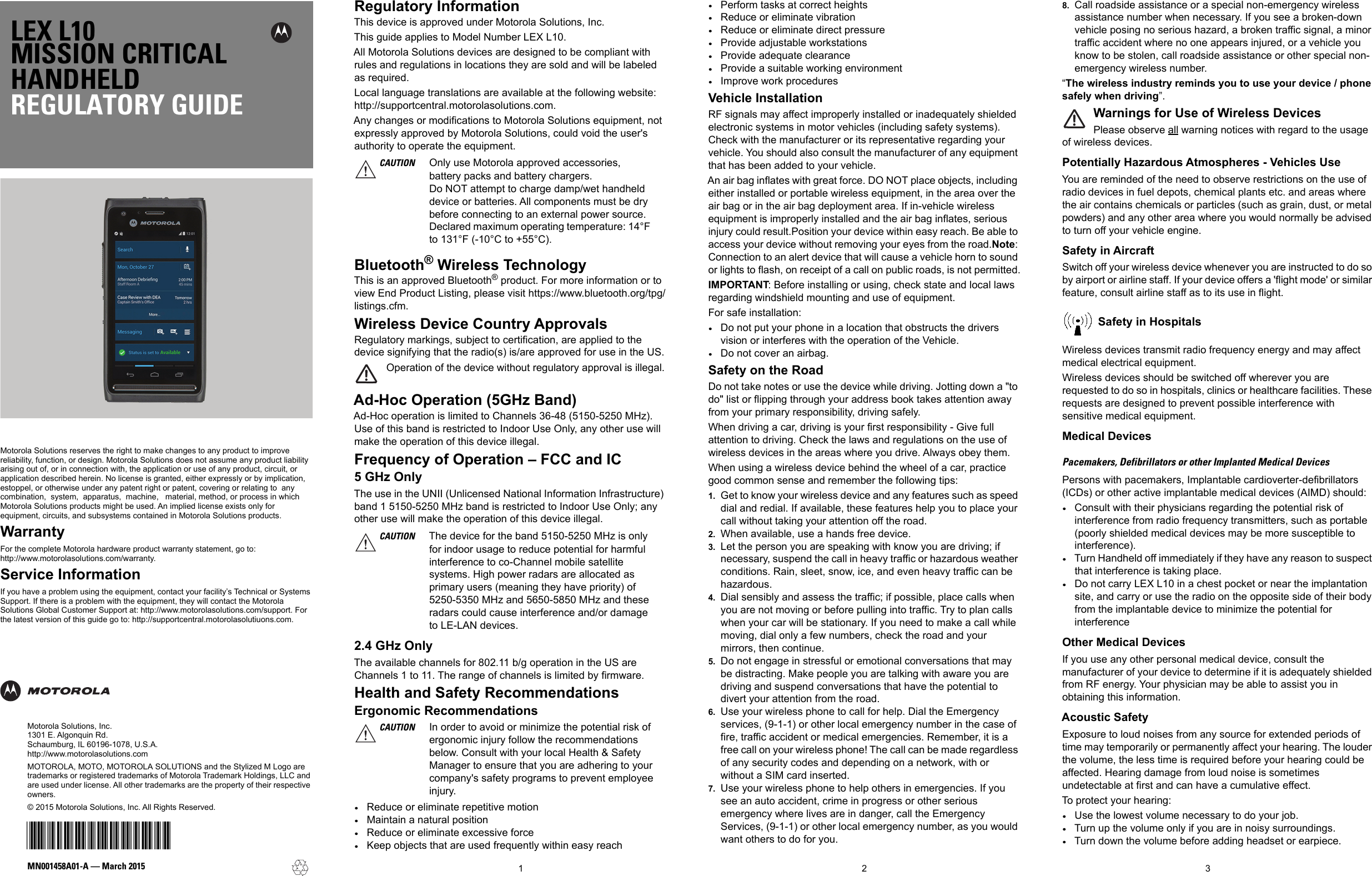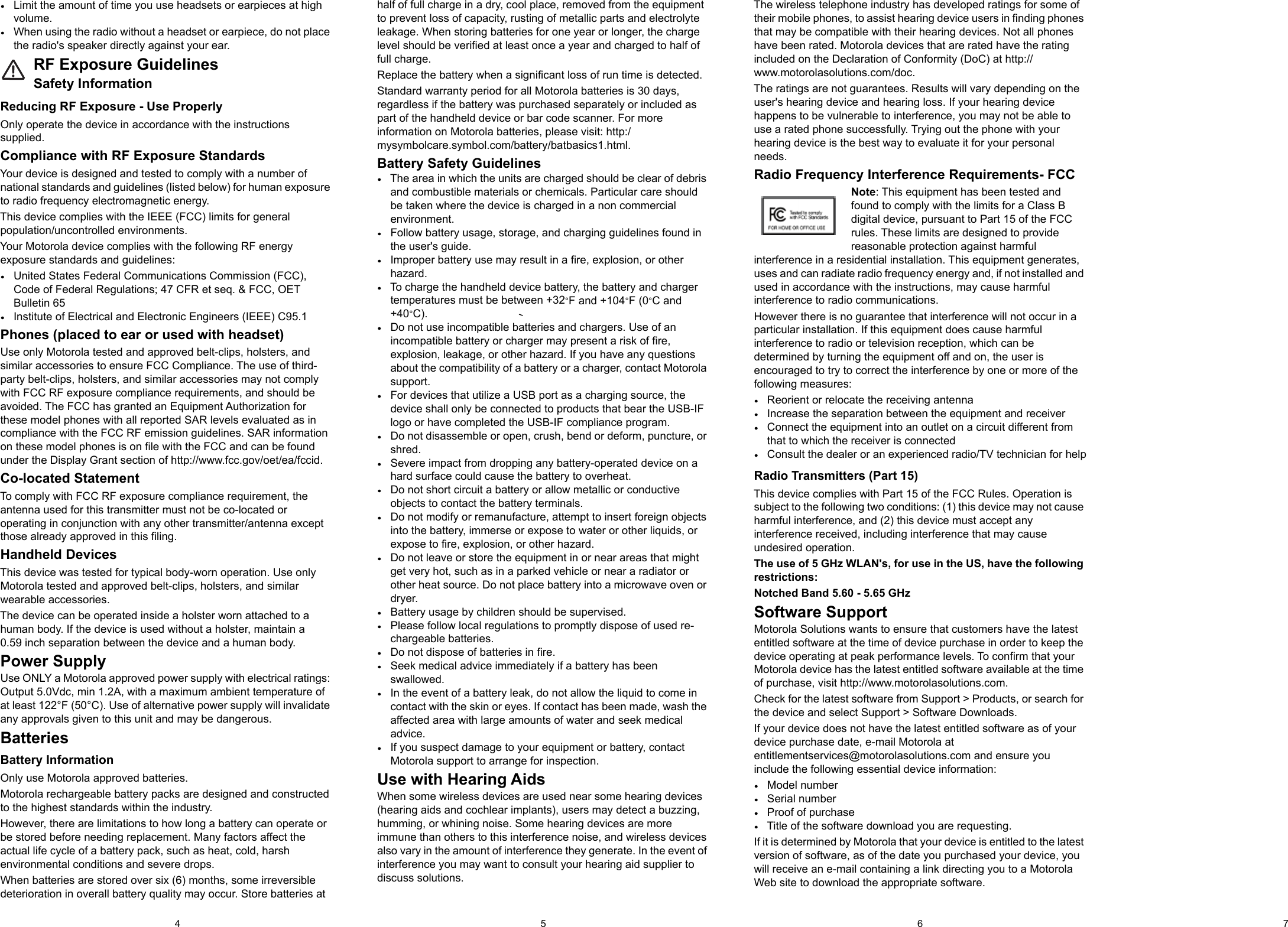Motorola Solutions 89FT7062 Smart phone User Manual LEX L10 Regulatory Guide MN001458A01 A
Motorola Solutions, Inc. Smart phone LEX L10 Regulatory Guide MN001458A01 A
Contents
- 1. User Guide
- 2. User Guide Regulatory
- 3. User Manual
- 4. User Manual Regulatory Guide
User Manual Regulatory Guide

